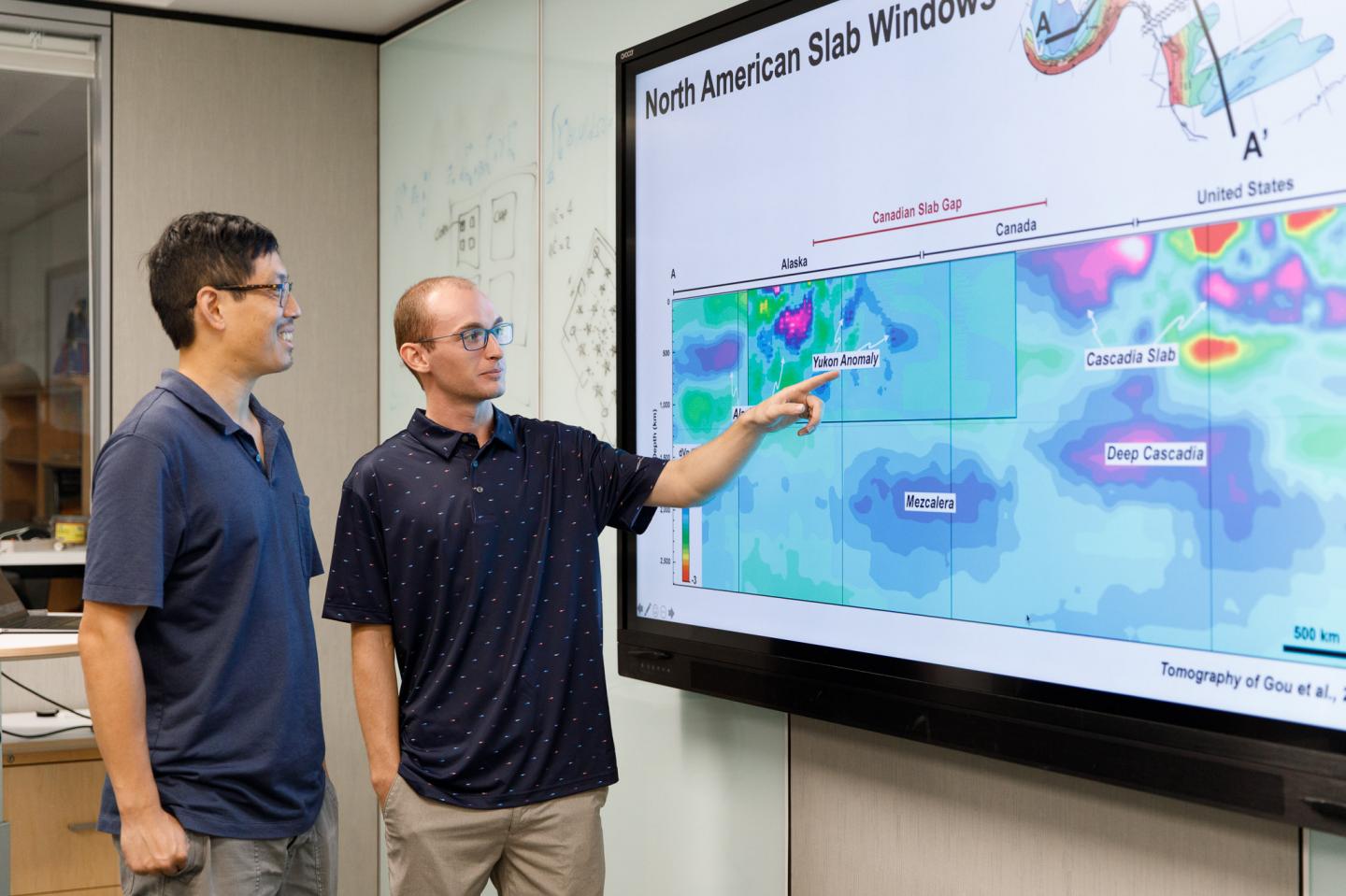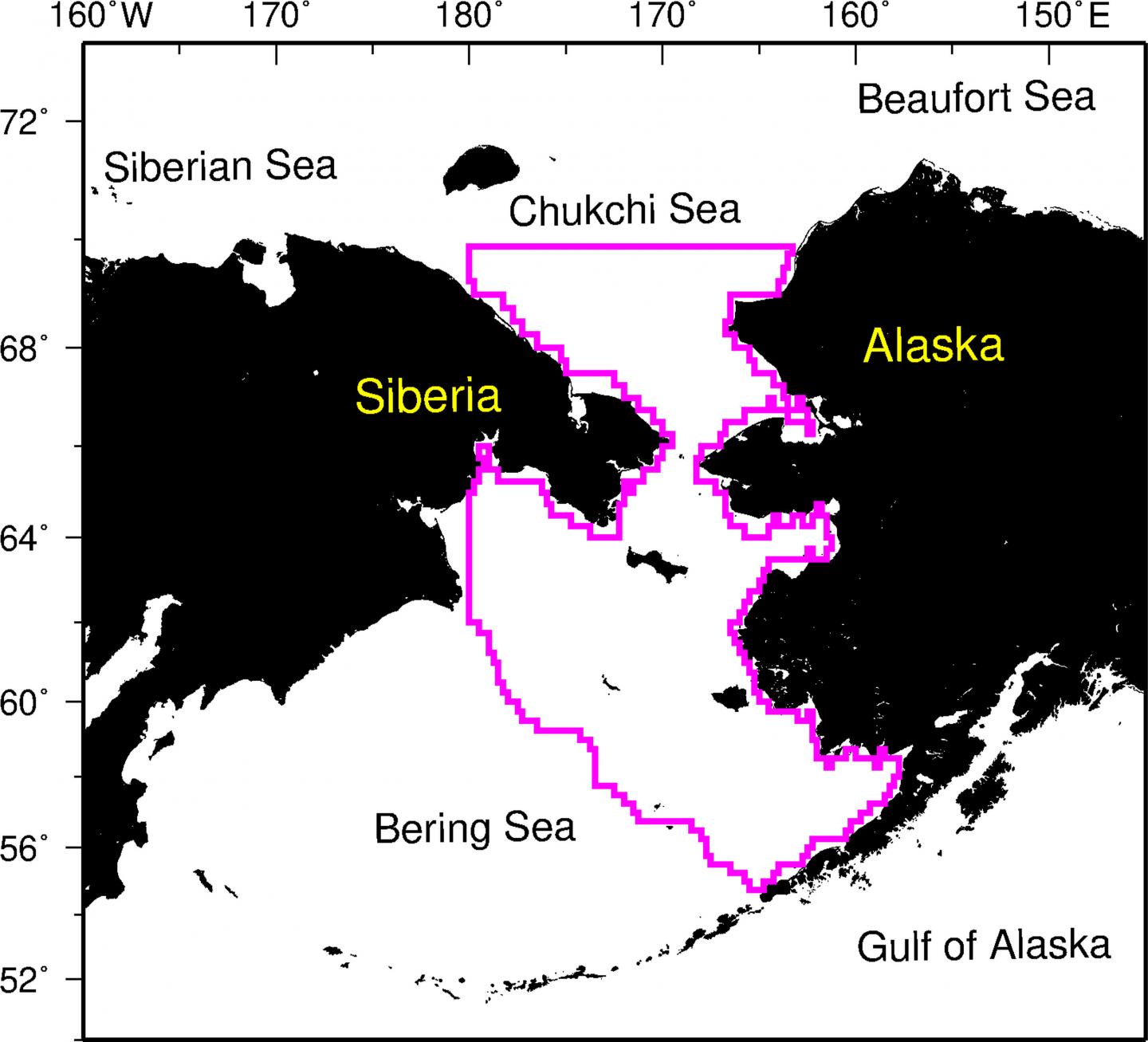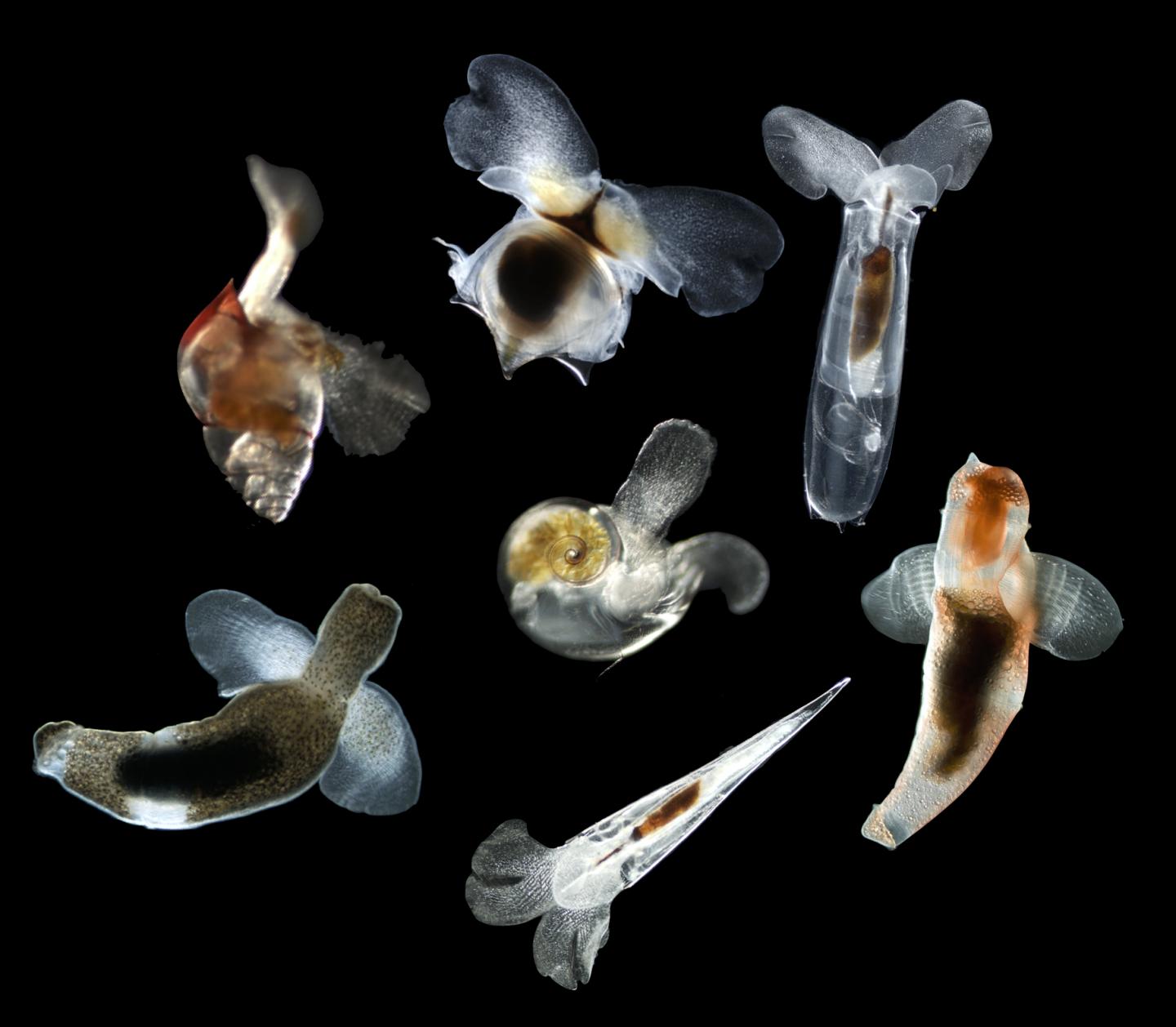Emissions from coal-fired power plants in China are fertilizing the North Pacific Ocean with a metal nutrient important for marine life, according to new findings from a USC-led research team. The researchers believe these metals could change the ocean ecosystem,…
Tag: OCEANOGRAPHY
Coastal permafrost more susceptible to climate change than previously thought
If you flew from the sea towards the land in the north slope of Alaska, you would cross from the water, over a narrow beach, and then to the tundra. From the air, that tundra would look like a landscape…
Management of exploited transboundary fish stocks requires international cooperation
Marine fish species are migratory in nature and not respectful of human-made territorial boundaries, which represents a challenge for fisheries management as policies tend to focus at the national level. With an average catch of 48 million tonnes per year,…

Lost and found: Geologists ‘resurrect’ missing tectonic plate
The existence of a tectonic plate called Resurrection has long been a topic of debate among geologists, with some arguing it was never real. Others say it subducted – moved sideways and downward – into the earth’s mantle somewhere in the Pacific Margin between 40 and 60 million years ago.
Depths of the Weddell Sea are warming five times faster than elsewhere
AWI long-term time series shows: due to changed winds and currents in the Southern Ocean, more heat is transported from the Antarctic Circumpolar Current to the depths of the Weddell Sea
Lost and found: UH geologists ‘resurrect’ missing tectonic plate
Long-debated plate located in Northern Canada using 3D mapping technology
Researchers to track how coastal storms impact groundwater quality
UMass Lowell, Woods Hole effort funded by National Science Foundation
Microbial diversity below seafloor is as rich as on Earth’s surface
KINGSTON, R.I., — October 20, 2020 — For the first time, researchers have mapped the biological diversity of marine sediment, one of Earth’s largest global biomes. Although marine sediment covers 70% of the Earth’s surface, little was known about its…
How a greenhouse catastrophe killed nearly all life
Scientists show the unfolding of one of the largest mass extinctions in Earth’s history
Palau’s coral reefs: a jewel of the ocean
The latest report from the Khaled bin Sultan Living Oceans Foundation finds Palau’s reefs had the highest coral cover observed on the Global Reef Expedition–the largest coral reef survey and mapping expedition in history.
Scientists improve model of landslide-induced tsunami
MIPT researchers Leopold Lobkovsky and Raissa Mazova, and their young colleagues from Nizhny Novgorod State Technical University have created a model of landslide-induced tsunamis that accounts for the initial location of the landslide body. Reported in Landslides , the model…
Tropical cyclones moving faster in recent decades
About 40% of the U.S. population lives in a coastal area and in Hawai’i, nearly everyone is vulnerable to the effects of tropical storms and hurricanes. Tropical cyclones, regionally known as hurricanes or typhoons, have been moving across ocean basins…
All-female scientific coalition calls for marine protected area for Antarctica Peninsula
Plus other ways to help penguins, whales, and seabirds
Deep-sea corals reveal secrets of rapid carbon dioxide increase as the last ice age ended
Southern Ocean carbon sequestration decreased as phytoplankton failed to devour macronutrients and trap carbon dioxide
Long-term data show a recent acceleration in chemical and physical changes in the ocean
Two open-ocean hydrographic stations record 40 years of change in the subtropical North Atlantic Ocean
Deep sea coral time machines reveal ancient CO2 burps
The fossilised remains of ancient deep-sea corals may act as time machines providing new insights into the effect the ocean has on rising CO 2 levels, according to new research carried out by the Universities of Bristol, St Andrews and…
World’s longest-running carbon dioxide measurement receives continuation funding
$1.45M grants from Eric and Wendy Schmidt to support Keeling Curve, ocean pH programs, key indicators of global warming
Study confirms plastics threat to south pacific seabirds
Plastic gathered from remote corners of the South Pacific Ocean, including nesting areas of New Zealand albatrosses, has confirmed the global threat of plastic pollution to seabirds. Published on 12 October in the journal Aquatic Conservation: Marine and Freshwater Ecosystems…
Recent Atlantic ocean warming unprecedented in nearly 3,000 years
UMass Amherst, Canadian research uses ancient lake sediments to extend climate record
Ed Fry selected as The Oceanography Society’s 2020 Jerlov Award Recipient
For Significant Advances in Knowledge of How Light Interacts with the Ocean
The deep sea is slowly warming
WASHINGTON–New research reveals temperatures in the deep sea fluctuate more than scientists previously thought and a warming trend is now detectable at the bottom of the ocean. In a new study in AGU’s journal Geophysical Research Letters , researchers analyzed…
Mathematical tools predict if wave-energy devices stay afloat in the ocean
New analytical framework predicts the propensity of wave-energy devices to capsize
Port engineers need guidance incorporating sea level rise into construction designs
New survey by URI researchers finds rising sea level often not factored into maritime infrastructure design
Introduction to the UN Decade of Ocean Science for Sustainable Development
The UN Decade of Ocean Science for Sustainable Development (2021-2030) (UN Decade) has an ambitious, transformative agenda developed to help reduce the decline in ocean health. Alan will present the journey from a 2017 UN General Assembly proclamation of a…
Sea-level rise projections can improve with state-of-the-art model
New ice-sheet “emulator” focuses on Antarctica, Rutgers research shows
Aerodynamicists reveal link between fish scales and aircraft drag
City, University of London’s Professor Christoph Bruecker and his team have transferred the idea of fish scales to arrays of bio-inspired scales which are capable of producing a streaky flow that could reduce skin friction drag by more than 25 percent.
Researchers find consistent mercury levels in arctic seals
Ringed seals and other Arctic marine mammals are important in the diet of Arctic Indigenous peoples. A study spanning 45 years of testing indicates that mercury concentrations in ringed seals from the Canadian Arctic have remained stable, showing very limited…
Who is driving whom? Climate and carbon cycle in perpetual interaction
Bremen climate scientists disclose changing feedback mechanisms between climate and global carbon cycle over the last 35 million years
Underwater robots to autonomously dock mid-mission to recharge and transfer data
WEST LAFAYETTE, Ind. — Robots can be amazing tools for search-and-rescue missions and environmental studies, but eventually they must return to a base to recharge their batteries and upload their data. That can be a challenge if your robot is…
210Pb dating of marine sedimentary cores
Laboratories from 14 countries (with different levels of experience in radiometric measurement of radionuclides in environmental samples and in the application of the 210 Pb dating method) participated in an interlaboratory comparison (ILC) exercise related to the application of the…
Climate change responsible for record sea temperature levels, says study
The ocean faces increasing threat from climate change
Blue whales change their tune before migrating
While parsing through years of recorded blue whale songs looking for seasonal patterns, researchers were surprised to observe that during feeding season in the summer, whales sing mainly at night, but as they prepare to migrate to their breeding grounds…
Ice discharge in the North Pacific set off series of climate events during last ice age
CORVALLIS, Ore. – Repeated catastrophic ice discharges from western North America into the North Pacific contributed to, and perhaps triggered, hemispheric-scale changes in the Earth’s climate during the last ice age, new research published online today in Science reveals. The…
University of Maine to host 2021 National NSF EPSCoR Conference in Portland, Maine
The theme of the November event will be ‘translating stakeholder needs into impactful research outcomes’
Predator-prey interaction study reveals more food does not always mean more consumption
Scientists at the NOAA Northeast Fisheries Science Center have developed an unusually rich picture of who is eating whom off the Northeastern United States. The findings, published recently in Fish and Fisheries , provide a close look at fish feeding…
Ocean warming and acidification effects on calcareous phytoplankton communities
A new study led by researchers from the Institute of Environmental Science and Technology of the Universitat Autònoma de Barcelona (ICTA-UAB) warns that the negative effects of rapid ocean warming on planktonic communities will be exacerbated by ocean acidification. The…
Texas A&M study: Marine heatwaves can strengthen hurricanes
Scientists have found that ocean events, such as a heatwave and a recent storm, can contribute to strengthening hurricanes

Marine biodiversity reshuffles under warmer and sea ice-free Pacific Arctic
Climate warming will alter marine community compositions as species are expected to shift poleward, significantly impacting the Arctic marine ecosystem.

Sentinels of ocean acidification impacts survived Earth’s last mass extinction
Two groups of tiny, delicate marine organisms, sea butterflies and sea angels, were found to be surprisingly resilient–having survived dramatic global climate change and Earth’s most recent mass extinction event 66 million years ago, according to research published this week in the Proceedings of the National Academy of Sciences led by Katja Peijnenburg from Naturalis Biodiversity Center in the Netherlands.
Insight from sports medicine leads to discovery about mussels in acidifying ocean
Shannon Meseck, a NOAA Fisheries research chemist and marathon runner, was initially interested in how ultra-runners can tolerate higher levels of carbon dioxide than non-athletes. A chance conversation with a medical doctor about ciliated cells in the human lung turned…
Vessel noise present year-round at Cordell Bank National Marine Sanctuary
NEWPORT, Ore. – The environment in the Cordell Bank National Marine Sanctuary off the coast of San Francisco is not a refuge from the noise generated by ship traffic, the first underwater marine acoustic study of the region has shown.…
Volcanic ash could help reduce CO2 associated with climate change
University of Southampton scientists investigating ways of removing carbon dioxide (CO2) and other greenhouse gases from our atmosphere believe volcanic ash could play an important role. A team from the University’s School of Ocean and Earth Science has modelled the…
Marine biodiversity reshuffles under warmer and sea ice-free Pacific Arctic
Climate warming will alter marine community compositions as species are expected to shift poleward, significantly impacting the Arctic marine ecosystem. The biodiversity of marine communities in the Pacific Arctic under future climate change scenarios highlights profound changes relative to their…
Is it one or two species? The case of the cluster anemones
If you dive in the Mediterranean Sea, the cluster anemone is among the most fascinating and magnificent corals you could see. You can find it on rocks or sponges, in scarcely lit areas such as sea caves and gorges, where…
Sentinels of ocean acidification impacts survived Earth’s last mass extinction
Two groups of tiny, delicate marine organisms, sea butterflies and sea angels, were found to be surprisingly resilient–having survived dramatic global climate change and Earth’s most recent mass extinction event 66 million years ago, according to research published this week…
‘Portfolio’ of marine reserves enhances fish populations
Scientists say a ‘portfolio’ of protected areas within marine parks such as the Great Barrier Reef can help secure sustainable fish populations. Dr Hugo Harrison from the ARC Centre of Excellence for Coral Reef Studies at James Cook University (Coral…
The ocean has become more stratified with global warming
The global ocean has become more stratified and stable over the past few decades with global warming. This has major consequences for life in the ocean by reducing nutrients and oxygen, and it greatly affects climate. A new study, by…
Increasing stability decreases ocean productivity, reduces carbon burial
As the globe warms, the atmosphere is becoming more unstable, but the oceans are becoming more stable, according to an international team of climate scientists, who say that the increase in stability is greater than predicted and a stable ocean…
The pace of environmental change can doom or save coral reefs
Increasing fishing too quickly can cause coral reef ecosystems to collapse, new University of Colorado Boulder-led research finds. The new study, to publish the week of September 28 in the Proceedings of the National Academy of Sciences , provides the…
Major wind-driven ocean currents are shifting toward the poles
Enhanced warming subtropical ocean is expanding the tropics